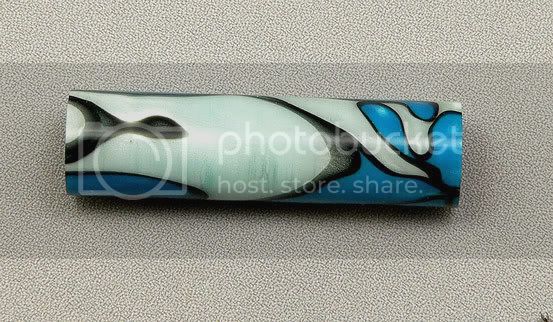Dan_F
Member
Here is a pic of a blank I just finished turning.

Does anyone have a guess as to what caused the vertical marks that you see in the white areas. They actually show up through the blue too, but not so much in the pic. These marks are on the inside surface of the blank.
I painted the inside of the blank, two coats of white Testor's, and painted the tubes white as well. This is the barrel of a Ligero (El Grande). The cap turned out fine.
While the material on the cap is half again as thick as that of the barrel, the marks were visible well before it was turned to final dimension. My first guess was scoring from the drill bit (cap and barrel take different size bits), but now I'm not so sure. Any thoughts?
Dan

Does anyone have a guess as to what caused the vertical marks that you see in the white areas. They actually show up through the blue too, but not so much in the pic. These marks are on the inside surface of the blank.
I painted the inside of the blank, two coats of white Testor's, and painted the tubes white as well. This is the barrel of a Ligero (El Grande). The cap turned out fine.
While the material on the cap is half again as thick as that of the barrel, the marks were visible well before it was turned to final dimension. My first guess was scoring from the drill bit (cap and barrel take different size bits), but now I'm not so sure. Any thoughts?
Dan
